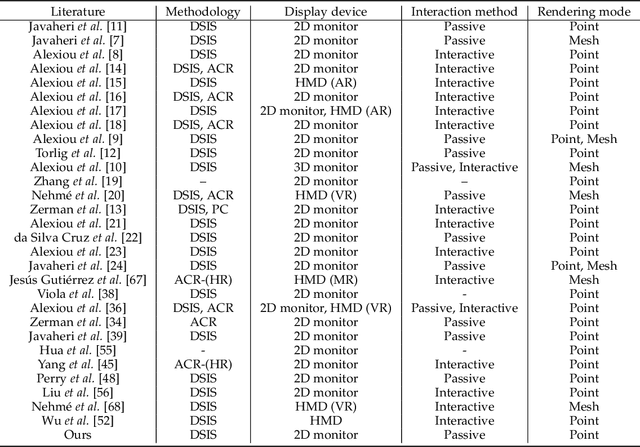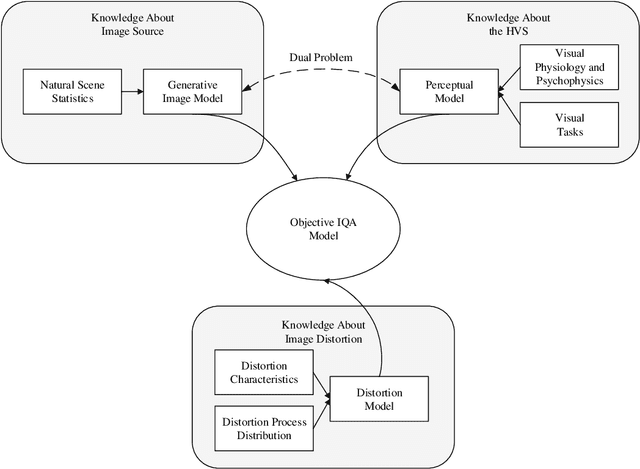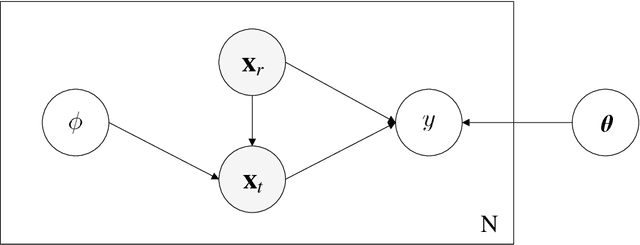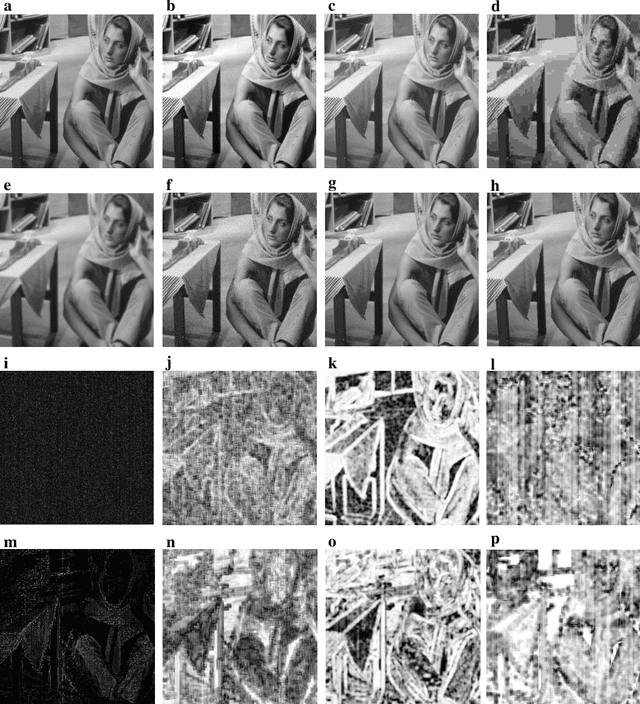Zhengfang Duanmu
Perceptual Quality Assessment of Colored 3D Point Clouds
Nov 10, 2021



Abstract:The real-world applications of 3D point clouds have been growing rapidly in recent years, but not much effective work has been dedicated to perceptual quality assessment of colored 3D point clouds. In this work, we first build a large 3D point cloud database for subjective and objective quality assessment of point clouds. We construct 20 high quality, realistic, and omni-directional point clouds of diverse contents. We then apply downsampling, Gaussian noise, and three types of compression algorithms to create 740 distorted point clouds. We carry out a subjective experiment to evaluate the quality of distorted point clouds. Our statistical analysis finds that existing objective point cloud quality assessment (PCQA) models only achieve limited success in predicting subjective quality ratings. We propose a novel objective PCQA model based on the principle of information content weighted structural similarity. Our experimental results show that the proposed model well correlates with subjective opinions and significantly outperforms the existing PCQA models. The database has been made publicly available to facilitate reproducible research at https://github.com/qdushl/Waterloo-Point-Cloud-Database.
Quantifying Visual Image Quality: A Bayesian View
Feb 22, 2021



Abstract:Image quality assessment (IQA) models aim to establish a quantitative relationship between visual images and their perceptual quality by human observers. IQA modeling plays a special bridging role between vision science and engineering practice, both as a test-bed for vision theories and computational biovision models, and as a powerful tool that could potentially make profound impact on a broad range of image processing, computer vision, and computer graphics applications, for design, optimization, and evaluation purposes. IQA research has enjoyed an accelerated growth in the past two decades. Here we present an overview of IQA methods from a Bayesian perspective, with the goals of unifying a wide spectrum of IQA approaches under a common framework and providing useful references to fundamental concepts accessible to vision scientists and image processing practitioners. We discuss the implications of the successes and limitations of modern IQA methods for biological vision and the prospect for vision science to inform the design of future artificial vision systems.
 Add to Chrome
Add to Chrome Add to Firefox
Add to Firefox Add to Edge
Add to Edge